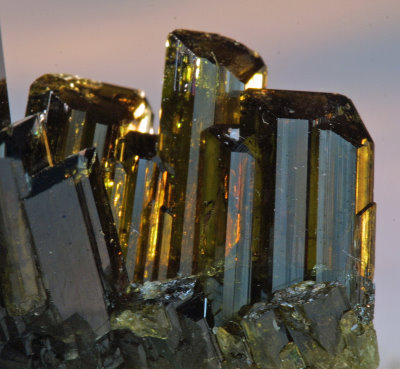| Crystal system | Monoclinic |
| Transparency | Transparent to opaque |
| Luster | vitreous to greasy |
| Fracture | Uneven to Conchoidal |
| Cleavage | Perfect |
| Specific Gravity | 3.21-3.38 |
| Hardness | 6.5 |
| Optical Character | Biaxial + ; Double Refractive |
| Refractive index | 1.724-1.734 |
| Birefringence | 0.010 |
| Dispersion | |
| Fluorescence | None |
| Pleochroism | |
| Chemical Formula | Ca2Al3Si3O12(OH) |
| Comments | |
| Streak | colorless |
Clinozoisite is a calcium aluminum silicate hydroxide with the formula Ca2Al3Si3O12(OH). Its name is derived from the Greek klinein, meaning "to incline" (because of the inclination of one axis), and zoisite after Austrian Baron Zois von Edelstein (1747 - 1819).
Clinozoisite ranges from colorless to yellow, green and brown, It belongs to the epidote group; clinozoisite and epidote are grouped together because they are very similar in many characteristics, particularly in crystal form. Epidote is often deeply colored but transparent; clinozoisite is usually lighter in color but is seldom free from flaws. Clinozoisite contains less than 10% iron in its molecule, but it always has some iron. When the molecule is totally free of iron, the stone is then zoisite.
Clinozoisite occurs often in fine crystals in low and medium grade metamorphic rocks, as well as in contact zones of metamorphosed limestone and in some granitic rocks, where it forms large crystals in pegmatite (a source of this type is Baja California, Mexico). Large crystals occur in scheelite deposits in Baja California Norte in Mexico, and the best source of clinozoisite is near Salzburg, Austria. Other sources are the Ala Valley, Italy; Switzerland; Czechoslovakia; and a gray-green variety is found in Kenya.
In cutting, clinozoisite can be treated in the same general manner as epidote. However, since it is more fragile and cleavages start more easily, it must be handled more carefully than epidote. Crown and pavilion angles of 40° are effective.


